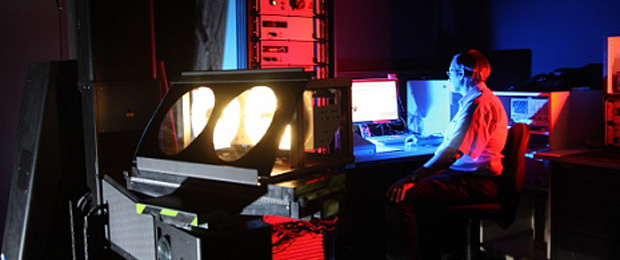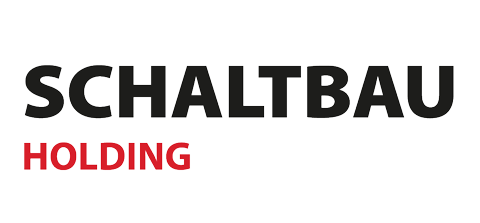Innovation
The increasing degree of mobility in the constantly growing megacities and metropolitan regions of today’s fast-moving world is placing ever-higher demands on the safety and reliability of public transport systems. Schaltbau has the crucial technological core competence needed to help rolling stock manufacturers develop the integrated mobility solutions of tomorrow.
In the continual enhancement of their range of products and services, Schaltbau Group companies transfer their knowledge in developing safety-relevant products to suit new fields of application. They cover a broad range of systems, components and interiors and can make a major contribution towards improving the travelling experience and passenger safety by means of new, intelligently designed functions and their increasing interconnectedness.
In order to safeguard its innovation leadership, the Schaltbau Group spends a high percentage of its earnings on research and development in comparison to other companies in the same sector. Around 400 Schaltbau employees are engaged in R&D activities worldwide.

CENTER OF EXCELLENCE: LIGHTING TECHNOLOGY
The company’s own laboratory signs responsible for measuring lighting technology products, and has been accredited as a testing laboratory for lighting technology according to DIN EN ISO IEC 17025 of the Deutsche Akkreditierungsstelle GmbH (DAkkS).
Besides establishing the curve of light intensity distribution and determining chromaticity coordinates, further measuring processes can be carried out. The light measuring path is about 25 metres at a maximum. The extensive equipment also comprises a computer controlled goniophotometer, a luminance measuring device, a spectrometer as well as various integrating sphere photometers with a diameter of up to two meters.
Determining the curve of intensity distribution
The light intensity is checked within the scope of the development and quality control. Schaltbau Pintsch Bamag carries out the evaluation of measuring results in accordance with the relevant regulations and customer’s prerequisites as well as the approval authorities and the various standards.
The lighting laboratory uses a goniophotometer, type I, according to DIN EN 13032-1, consisting of a very precisely adjustable table and an evaluation unit, for measuring the curve of light intensity. By using a regulated DC-drive, it is possible to capture light distributions with a maximum angle resolution of 0.01° on the horizontal and vertical axle. The measuring process is fully automatic and controlled by a computer, and therefore the pre-set measuring areas can be scanned precisely and reproducibly.
The light generated from the luminaire to be measured in the relevant axles, is registered by a temperature stabilised illuminance sensor at adjustable measuring distances of up to a maximum of 25 metres. The measured values of illuminance are automatically converted by the evaluation unit, depending on the measuring distance, into light intensities in accordance with the law of photometric distance, and displayed. The established measuring values are graphically prepared, by using evaluation software so that a visual evaluation of the light intensity distribution is achieved without having to use any further equipment. An essential prerequisite for guaranteeing a precise measuring process is a correct positioning of the object to be tested. To this end, the position of the measuring head in the measuring path is aligned with the pivot point of the goniophotometer by means of an alignment laser. An additional positioning laser aligns the light centre of the tested object along the measuring path towards the photo sensor. By using different measuring heads, constant-, as well as pulsed light sources can be measured up.
Colorimetry
An essential factor, during the development of lighting components, is maintaining the pre-set , very tightly defined colour regions. The chromaticity position can be established by determining the chromaticity coordinates x and y. By establishing these two chromaticity coordinates, the chromaticity can be depicted in the CIE chromaticity diagram and be compared with the pre-set ranges. To be able to carry this out, there are two processes for measuring the chromaticity available to Schaltbau Pintsch Bamag. A compact-array- spectrometer is used to perform spectral color analysis on lighting sources.
This device determines the chromaticity part by using the spectral method, where the chromaticity coordinates are calculated after having measured the whole spectrum. During this calculation the sensitivity curve V(λ) of the human eye is brought into the process. The resulting colour is shown in shape of the standard chromaticity coordinates. The advantage of this procedure is that the whole spectrum of the lighting source can be established and also the possibility of carrying out specific test at individual LEDs. The results can be prepared graphically with an evaluating software and the resulting correlated colour temperature be calculated.
The second variant to establish the standard chromaticity coordinates is offered by the tristimulus method. The sensor head used consists of three photo-electric receivers that are adapted to the relative spectral sensitivity curve of the human eye by filters. The chromaticity coordinates x and y are calculated from the thus resulting measuring values.
Determination of the Luminous Flux
The luminous flux is defined by the total light output of a light source and serves to establish the efficiency of an optical system. The light efficiency could basically be considered as the energy output in units of Watt. However, the optical efficiency of a lighting source is thus not described properly, as the output of radiation is registered across the whole frequency range without exception and the different spectral sensitivity of the eye is not considered. The value of Lumen [lm] is the result of integrating the spectral sensitivity of the eye.
An integrating sphere is used amongst others for determining the luminous flux of “lamps”. It is a hollow sphere, whose interior surface is coated with a homogenous reflecting white material. The “lamp”, whose luminous flux is to be determined, is positioned in the centre of the hollow sphere. In its horizontal axle, the integrating sphere has an opening, in which the sensor for measuring the strength of light is positioned. In front of this, there is a shutter, preventing direct light from interfering with the sensor. Thus it is guaranteed that only the diffusely reflected light hits the sensor. With the so obtained value of the illuminance, the luminous flux can be determined by carrying out a comparison measuring with a standard lamp.
Measuring the Luminance
The luminance is the relevant value for the impression of brightness, whereby the impression of brightness is influenced by the eye’s condition of adaptation, the surrounding contrasts and the contents of information of the seen surface. Measuring the luminance can be carried out comfortably and fast with a high resolution luminance and colour measuring camera. By using the appertaining evaluation software, the pictures are evaluated and processed. Measuring the luminance makes it possible to obtain a visual impression of a light emitting surface in relation to the uniformity of luminance. The luminance describes the light originating from this surface. On the one hand the light can originate from the surface itself (e.g. lamps and lights). The luminance is here defined as the relation of the light intensity to the area vertically projected to the level of the direction of radiation. On the other hand, light can also be reflected or transmitted from a surface. For the products by Schaltbau Pintsch Bamag it is especially important that the surface of a signal can be seen properly by the observer. Therefore light intensity examinations are carried out as a rule during the development.
